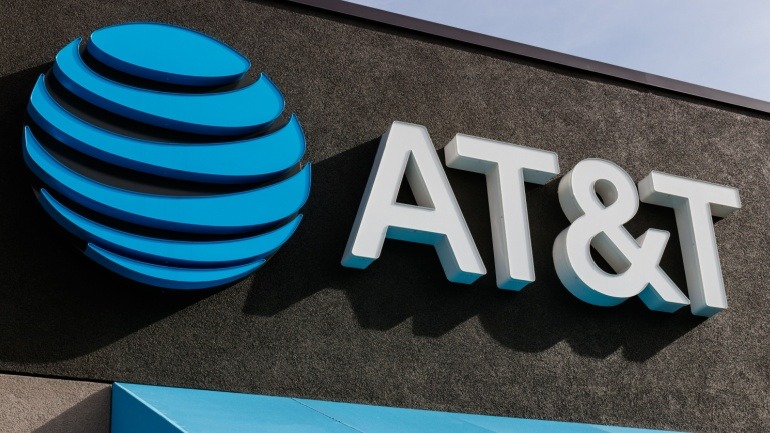5G has been a target of conspiracy theorists for as long as it has been around, just as with 4G and 3G before it. It is not the first time, and it will not be the last, that technological progress has caused fear generated by uncertainty about the risks of new technology.
The remarkably disruptive COVID-19 pandemic, which has coincided with the worldwide introduction of 5G, the latest standard in wireless networking technology, has exacerbated the situation. People have begun to link 5G to COVID-19 in various ways, saying that the technology weakens the immune system, that it is responsible for the direct transmission of the virus, or that the lockdown is a cover-up for deploying even more 5G towers.
Let us take a look at some of the theories out there.

5G is the cause of COVID-19
Back in March of 2020, a video of a US doctor Thomas Cowan, who is on disciplinary probation, went viral. In the video he claimed that 5G poisons cells in the body forcing them to excrete waste, which eventually became known as COVID-19. Cowan suggested the emergence of the Spanish Flu (1918) coincided with the launch of commercial radio services (1920), while he also highlighted the fact that Wuhan is ground-zero for COVID-19 and is also the first city to have 5G. This video has since been removed by YouTube. Another claim by theorists is that 5G induces the coronavirus in skin cells and from there it spreads throughout the human body. To cite a now removed paper “5G Technology and Induction of Coronavirus in Skin Cells”: “In this research, we show that 5G millimeter waves could be absorbed by dermatologic cells acting like antennas, transferred to other cells and play the main role in producing Coronaviruses in biological cells.”
5G is hazardous to human health
The claims that radio waves are dangerous to humans have been haunting the industry for many years before 5G technology was even planned. The deployment of 5G seems to have led to a resurgence of these claims. The main point of this theory is that the waves used by 5G can be harmful to human health, as the equipment emits radiation. According to conspiracy theorists, 5G uses the same millimeter waves as a microwave oven and can therefore cook the human brain. They claim that increased wave frequency also increases the risk of cancer, genetic damage, changes in the reproductive system, learning and memory deficits, neurological disorders, and have adverse effects on general human well-being. Several conspiracy theorists also claimed that viral videos of people falling to the ground and fainting in China were the result of 5G radio waves decreasing oxygen levels in the blood of citizens.
5G acts as an accelerator for the coronavirus
With the spread of coronavirus, the 5G conspiracy theorist started to suggest that the rollout of the 5G had somehow intensified the pandemic. This is probably one of the most widely spread theories. There are numerous posts in the Anti-5G Facebook group suggesting that 5G suppresses people’s immune systems, making people prone to the virus. The theory is that mobile radiation affects the human body at the molecular level, suppressing the immune system and preventing the body from fighting the virus. In addition, one of the more distinctive conspiracy theories currently in existence is that viruses can communicate over the airwaves. A paper authored by several scientists back in 2011 laid the groundwork for these claims, as they argued that bacteria can produce electromagnetic signals to communicate with each other. Some people believe that viruses have similar capabilities.
5G can kill wildlife
An event that took place in 2018 in the Netherlands caused some outrage in people. Hundreds of birds in a park suddenly began to fall from the trees and die during a suspected 5G experiment. It was also reported that nearby ducks began to react strangely, and it is suggested that they put their heads underwater to escape radiation. From October 19 until November 3 of 2018, 339 dead birds were found. In addition, some theorists claim that one of the features of 5G is that plants and rain are particularly sensitive to millimeter wave absorption. Humans and animals consume plants as a food source, and exposure to millimeter waves can make food unsafe to consume.
5G destroys the ozone layer
The theory is that to implement a 5G global wireless network, rockets must be launched to deploy 5G satellites. These satellites have a short lifespan and will require regular deployments. The new type of hydrocarbon rocket engine, which is expected to fuel the suborbital rocket fleet, would emit black carbon, which could cause significant changes in global atmospheric circulation, ozone and temperature distribution. Solid-state rocket exhaust contains chlorine, which also destroys ozone.
The lockdown is a government cover-up
The allegations suggest that COVID-19 is a government conspiracy to ensure a public lockdown that will allow the installation of 5G antennas and masts without the public’s knowledge. By doing so in secret, the public will not be able to object or protest in a timely manner. Some say that the 5G is a military-level weapon, while others argue that the health consequences of 5G are known by the government, hence the need to deploy this technology during lock-up.

What these theories have in common is that they give people something to blame. Due to 5G fears and panic caused by the global coronavirus pandemic, people began to set telecommunication towers on fire and harass broadband workers in the streets. Ever since the world introduced lockdown, telecom engineers have reluctantly found themselves on the front lines of a strange, global conspiracy movement.
Most of the incidents could be attributed to non-physical harassment, such as insults and death threats, but some were violent and posed a real threat. Telecommunications engineers also suffered physical abuse. Conspiracy theorists went so far to hide razor blades and needles behind posters on telephone poles. The U.S. Department of Homeland Security even issued a warning to telecom operators about the potential threat to wireless equipment. And all of this has occurred because some people actually believe the theory that 5G is to blame for the coronavirus pandemic.
A few people engaged in conspiracy theories went further, committing acts of vandalism and even setting fire to telecom masts. While attacks on mast seem to be slowing down, they were initially coordinated on social media. According to the telecoms associations ETNO and GSMA, between January and early June of this year, such false claims have led to more than 140 arson attacks on infrastructure such as mobile phone masts in 10 European countries. Due to the slow deployment of the high-speed network, most of the infrastructure affected actually provided 3G and 4G coverage rather than the newer 5G services, threatening to disconnect vital communications at a time of international emergency.
Phone carriers and other telecoms companies have had to take a number of precautions to protect their staff, who have continued to provide essential services while the rest of the population is on lockdown. Measures have included removing company signage from vans, establishing security at some sites, and ensuring that engineers are not working alone and have colleagues with them.
In short, the acclaimed allegations have prompted believers to protest during the pandemic and attack 5G masts around the world. However, it is unclear to what extent they affect the public’s attitudes towards technology and the telecommunications sector as a whole.

As 5G and coronavirus fears moved from small chat rooms to the outside world, government regulators, organizations and telecom providers had to get involved to combat misinformation and attempt to relieve the situation.
As noted in a World Health Organization’s (WHO) report from February, the pandemic was accompanied by a “massive infodemic”. The WHO had to warn the public about misinformation related to 5G telephone networks, explaining that 5G does not cause COVID-19 and that viruses do not spread through radio waves or mobile networks. In addition, they pointed out that COVID-19 is spreading in many countries that do not even have a 5G mobile network.
So, what exactly is 5G? Well, 5G is the fifth-generation cellular network technology standard that mobile phone companies started implementing worldwide in 2019. 5G introduces three new aspects to the network: wider channels, lower latency and the ability to simultaneously connect more devices. The multi-tier 5G strategy uses three types of radio signals to provide cellular services to 5G devices: low, medium and high frequency.
Major improvements in 5G will be achieved by high-band networks in which signals propagate at millimeter-wave frequencies, and this is what causes outrage amongst the public. But millimeter-wave frequencies should cause even less concern, said NYU’s Department of Radiology Professor Christopher M. Collins, because they cannot penetrate surfaces such as walls, trees or human skin.
Like FM radio waves and visible light, millimeter-frequency waves are in the “non-ionizing” radiation spectrum, which means that they do not have enough energy to damage the DNA of cells and cause cancer, unlike, for example, X-rays. Experts say that decades of research show that the only way wireless technology can interact with the body is by heating the skin, but energy levels are so low that this is not a problem.
The International Commission on Non-Ionizing Radiation Protection (ICNIRP), a Germany-based international commission responsible for determining the limits of radiation exposure, has also repeatedly stated that airwaves used in mobile communications are not harmful to health.
Telecommunications providers also had to step forward to combat misinformation. In a joint statement, the UK networks EE, O2, Three and Vodafone wrote: “There is no scientific evidence of any link between 5G and coronavirus. Fact. Not only are these claims baseless, they are harmful for the people and businesses that rely on the continuity of our services.”
Conclusion
5G can take technology to the next level by further modernizing communications for our generation, providing higher speed, coverage and responsiveness of wireless networks. As with many modern advances in technology and innovation, there will be resistance and protest against the development from people inside and outside the industry. Most of the dissent manifests itself as harassment, but may go as far as physical abuse and destruction of property.
At this point, we recommend being vigilant and looking at the situation with a healthy dose of skepticism. It is advisable to use critical thinking, to analyze and evaluate factual evidence before forming an opinion on such a controversial topic.







